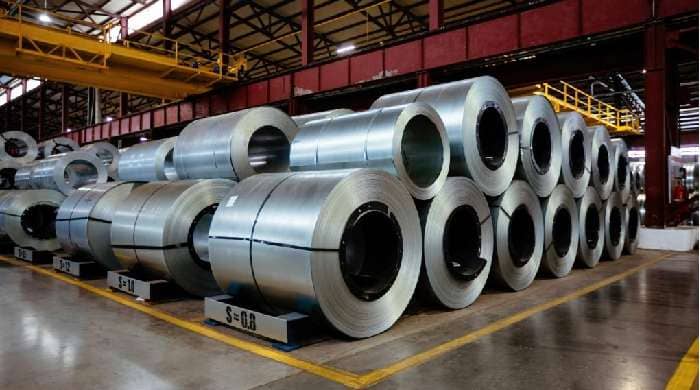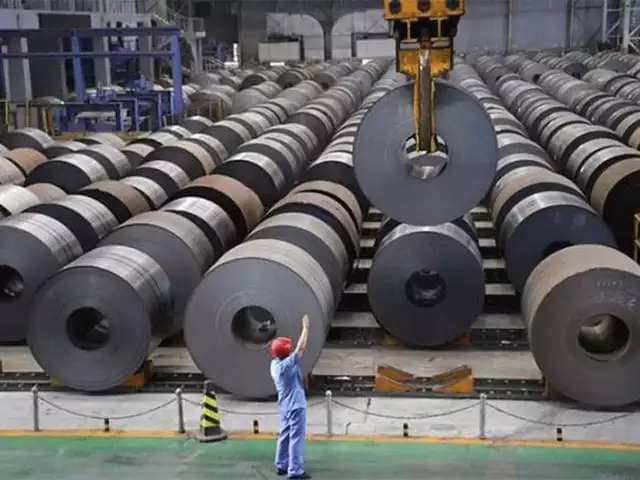Today’s Steel Price
- Opening Price: ₹41,690.00
- Current Trend: Declining by 0.19%
- Date: 12 September 2024
Get More Details on BigMint
Why Steel Matters
Steel, made from iron, carbon, and other elements, has been crucial in manufacturing for centuries. It’s used in many industries, including automotive and construction. Despite the rise of new materials like graphene and the ongoing use of materials like wood, steel remains a top choice due to its reliability and versatility.
Key Points:
- Historical Significance: Steel has been essential since the Iron Age, around 4000 years ago.
- Current Use: It’s still widely used across various industries because of its dependability and broad application.
Steel Industry in India
Overview Steel has been a key driver of industrialization and economic development in India. As a crucial raw material and intermediate product, its production and consumption are significant indicators of economic progress. India is the second-largest producer of crude steel globally, reflecting its substantial role in the global steel industry.
Current Production
- 2023: India produced 125.32 million tonnes (MT) of crude steel and 121.29 MT of finished steel.
- 2024 Forecast: Production is expected to reach 123–127 MT, marking a growth of 4-7%.
Key Factors Driving Growth
- Labor and Raw Materials: India benefits from inexpensive labor and abundant domestic iron ore, which has been a major factor in the industry’s expansion.
- Modernization: The Indian steel industry is continuously upgrading to improve energy efficiency and modernize older plants.
Industry Groups
- Main Producers: Major steel manufacturing companies with large-scale operations.
- Secondary Producers: Smaller firms that often use scrap steel and other inputs to produce various steel products.
- Major Producers: Significant players in the steel market contributing to the bulk of production.
Historical and Future Trends
- Past Decade: Over the past 10 to 12 years, domestic steel demand in India has increased by nearly 80%, while production has risen by 75%.
- Future Projections: By 2030–31, annual steel production in India is expected to exceed 300 million tonnes.
Significance The steel industry is a major contributor to India’s manufacturing output and overall economic growth. Its development reflects both the country’s industrial progress and its increasing role in the global steel market.
Types of Steel
1. Carbon Steel Carbon steel is mainly iron and carbon. The carbon content affects its hardness, strength, and ductility.
- Low Carbon Steel: Up to 0.25% carbon; soft, ductile, and easy to weld.
- Medium Carbon Steel: 0.25% to 0.6% carbon; stronger than low carbon steel.
- High Carbon Steel: 0.6% to 1.5% carbon; very hard, tough, but not very ductile.
2. Stainless Steel Contains at least 10.5% chromium, which gives it excellent corrosion resistance.
- Austenitic Stainless Steel: Non-magnetic, corrosion-resistant; used in kitchen appliances and food processing.
- Ferritic Stainless Steel: Magnetic, good corrosion resistance; used in automotive parts and kitchenware.
- Martensitic Stainless Steel: High strength and hardness; used in cutlery and industrial tools.
- Duplex Stainless Steel: Mixed structure of austenite and ferrite; strong and corrosion-resistant; used in chemical processing.
- Precipitation Hardening Stainless Steel: Strengthened by heat treatment; used in aerospace and surgical instruments.
3. Alloy Steel Carbon steel mixed with elements like chromium or nickel to enhance properties like strength and corrosion resistance. Used in construction and machinery.
4. Tool Steels Designed for making tools; very hard and resistant to wear. Used in cutting tools, dies, and molds.
Properties of Steel
- Strength: Steel is strong, suitable for many applications; varies with composition.
- Durability: Withstands heavy loads and extreme conditions.
- Ductility: Ability to deform without breaking; low and medium carbon steels are highly ductile.
- Hardness: Varies with composition and heat treatment; high carbon and alloy steels can be very hard.
- Corrosion Resistance: Stainless steel resists rust; carbon steel needs protection.
- Weldability: Low and medium carbon steels are easy to weld; other types may need specific techniques.
- Heat Resistance: Steel maintains strength at high temperatures; some alloys are specially designed for heat resistance.
- Conductivity: Good electrical and thermal conductivity.
- Machinability: Ease of shaping steel; varies by type.
- Versatility: Available in many forms and grades for different uses.
Factors Affecting Steel Prices
- Supply and Demand: Higher demand or lower supply raises prices.
- Materials Cost: Prices of iron ore and scrap metal affect steel costs.
- Shipping and Labor Costs: Fluctuate based on location, currency, and political conditions.
- Currency Fluctuations: Changes in currency strength impact steel prices.
- Energy Costs: Energy needed for production affects costs.
- Government Policies: Trade policies, tariffs, and regulations can influence prices.
- Technological Advancements: Innovations can lower or increase production costs.
- Global Economic Conditions: Economic growth boosts demand; downturns can lower prices.
- Geopolitical Factors: Events like trade disputes can affect prices.
- Speculation: Trading activities can cause price fluctuations.
Benefits and Features of Steel
- Durability: Resistant to termites, corrosion, and fire; does not rot or warp.
- Cost Efficiency: Quick and cost-effective in construction; long-term durability reduces replacement needs.
- Low Emissions: Contributes to a low-carbon future; recycling steel saves energy.
- Design Flexibility: Can be shaped, welded, and painted in various ways.
- Recyclability: 100% recyclable; a significant percentage is made from recycled materials.
How Steel Rates are Decided
The CRU Index is a key benchmark for steel prices, specifically for U.S. Midwest Domestic Hot-Rolled Coil Steel (HRC). It tracks actual transactions and helps set fair prices for futures and options contracts. Steel market prices reflect global costs, while product prices account for specific factors like production and transport costs.
Steel Sector Stocks
Steel Sector Stocks are shares of companies involved in steel production, distribution, or processing. Investing in these stocks can support the industry’s growth. Key factors influencing stock performance include:
- Economic Conditions: Global and local economic health.
- Technology: Advances or disruptions in steel production.
- Trade Regulations: Impact of tariffs and trade policies.
Investment Tips:
- Long-Term Focus: Steel investments often benefit from a long-term perspective.
- Diversification: Spread investments to reduce risk.
- Research: Assess market share, production capacity, and financial health of companies before investing
Why Invest in Steel?
1. Essential Industry Steel is crucial for many industries like construction, engineering, and automotive. Its consistent demand is driven by its role in building infrastructure, machinery, and transportation networks.
2. Economic Growth Steel use rises with economic growth. As countries develop and urbanize, they need more steel. Investing in steel lets you tap into the growth of emerging markets and developing economies.
3. Global Demand Steel is traded worldwide, offering a chance to diversify your investments. The global demand for steel can benefit investors by spreading risk and capturing growth across different regions.
4. Long-Term Stability Steel has a proven track record of stability. Despite short-term ups and downs, the long-term demand for steel remains strong due to continuous infrastructure development and urbanization.
5. Infrastructure Investments Governments are investing heavily in infrastructure projects, which boosts steel demand. These investments create significant opportunities for steel producers and investors.
6. Technological Advancements The steel industry is evolving with new technologies that improve production and reduce environmental impact. Investing in innovative steel companies can expose you to these advancements and potentially yield long-term gains.
7. Dividend Income Many steel companies pay dividends, providing regular income. For income-focused investors, steel stocks can offer attractive dividend yields along with the potential for capital appreciation.
Here’s a simplified version of the FAQs on steel prices:
1. What affects the price of steel? Steel prices depend on supply and demand, costs of materials, shipping, labor, energy, currency changes, government policies, and global economic conditions.
2. How do government policies impact steel prices? Policies on trade, taxes, and environmental rules can change the cost of making steel and affect its price.
3. Why invest in the steel industry? Investing in steel can be beneficial because it’s a key industry, can grow with the economy, offers stability, and can provide dividends.
4. What’s in steel, and how does raw material scarcity affect its price? Steel is mostly made from recycled metal and iron ore. If these materials become scarce, steel prices can go up.
5. How do currency changes affect steel prices? If your local currency weakens against the US Dollar, steel prices can increase because it becomes more expensive to buy steel.
6. How do energy costs impact steel prices? Steel production uses a lot of energy. If energy prices go up, making steel gets more expensive, which can raise steel prices.
7. How do environmental rules affect steel prices? Strict environmental rules can make steel production more expensive, which can lead to higher steel prices.
8. Why is steel valuable as a building material? Steel is durable, resistant to pests and fire, and lasts a long time, making it a cost-effective and reliable building material.
9. How does steel’s recyclability support sustainability? Steel can be 100% recycled, which saves resources, energy, and reduces emissions, aligning with environmental goals.
10. Why is the steel industry a good long-term investment? Despite short-term ups and downs, steel is essential for infrastructure and industry, making it a stable and reliable investment over the long term.







+ There are no comments
Add yours